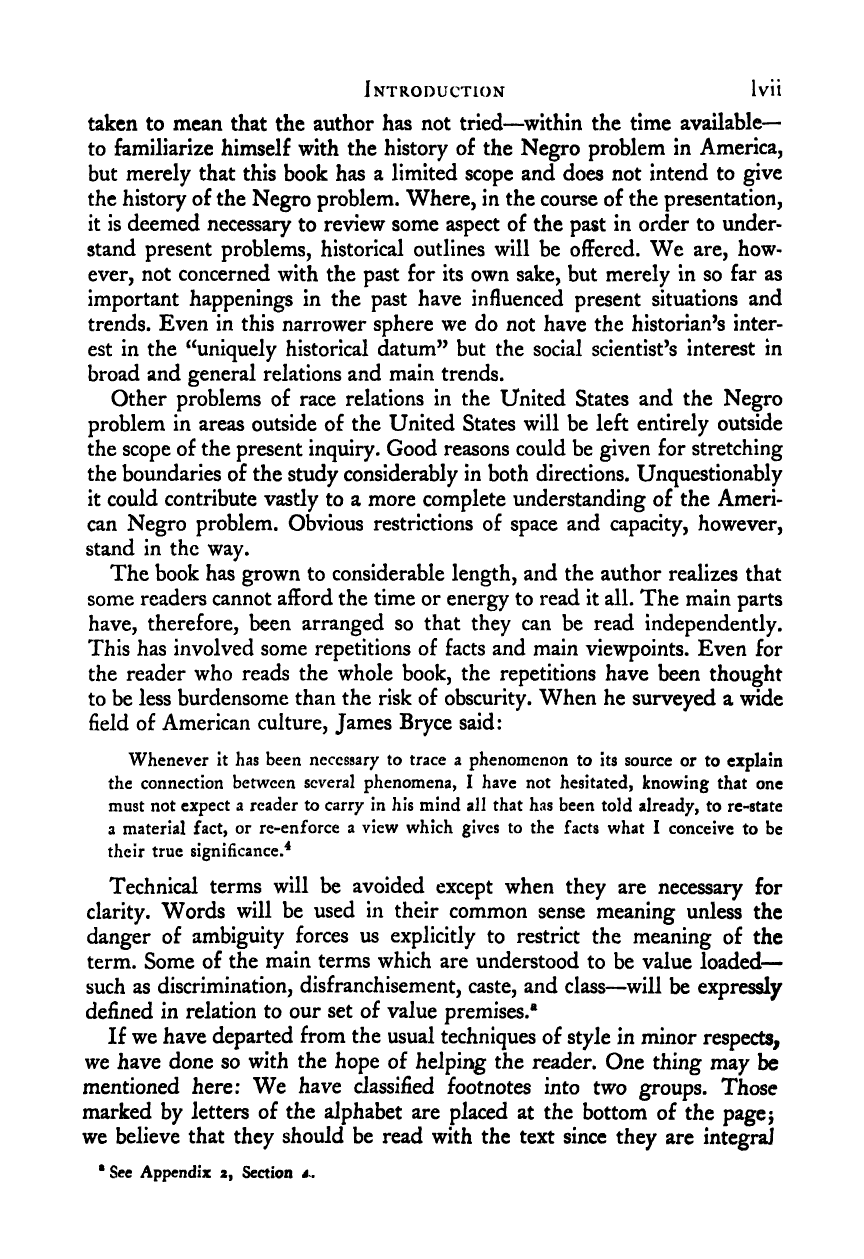Note: Gunnar Myrdal died in 1987, less than 70 years ago. Therefore, this work is protected by copyright, restricting your legal rights to reproduce it. However, you are welcome to view it on screen, as you do now. Read more about copyright.
Full resolution (TIFF) - On this page / på denna sida - Introduction - 5. Some Further Notes on the Scope and Direction of this Study

<< prev. page << föreg. sida << >> nästa sida >> next page >>
Below is the raw OCR text
from the above scanned image.
Do you see an error? Proofread the page now!
Här nedan syns maskintolkade texten från faksimilbilden ovan.
Ser du något fel? Korrekturläs sidan nu!
This page has never been proofread. / Denna sida har aldrig korrekturlästs.
Introduction Ivii
taken to mean that the author has not tried—within the time available—
to familiarize himself with the history of the Negro problem in America,
but merely that this book has a limited scope and does not intend to give
the history of the Negro problem. Where, in the course of the presentation,
it is deemed necessary to review some aspect of the past in order to under-
stand present problems, historical outlines will be offered. We are, how-
ever, not concerned with the past for its own sake, but merely In so far as
important happenings In the past have influenced present situations and
trends. Even in this narrower sphere we do not have the historian’s inter-
est in the ‘^uniquely historical datum” but the social scientist’s interest in
broad and general relations and main trends.
Other problems of race relations in the United States and the Negro
problem in areas outside of the United States will be left entirely outside
the scope of the present inquiry. Good reasons could be given for stretching
the boundaries of the study considerably in both directions. Unquestionably
it could contribute vastly to a more complete understanding of the Ameri-
can Negro problem. Obvious restrictions of space and capacity, however,
stand in the way.
The book has grown to considerable length, and the author realizes that
some readers cannot afford the time or energy to read it all. The main parts
have, therefore, been arranged so that they can be read independently.
This has involved some repetitions of facts and main viewpoints. Even for
the reader who reads the whole book, the repetitions have been thought
to be less burdensome than the risk of obscurity. When he surveyed a wide
field of American culture, James Bryce said:
Whenever it has been necessary to trace a phenomenon to its source or to explain
the connection between several phenomena, I have not hesitated, knowing that one
must not expect a reader to carry in his mind all that has been told already, to re-state
a material fact, or re-enforce a view which gives to the facts what I conceive to be
their true significance.^
Technical terms will be avoided except when they are necessary for
clarity. Words will be used in their common sense meaning unless the
danger of ambiguity forces us explicitly to restrict the meaning of the
term. Some of the main terms which are understood to be value loaded
—
such as discrimination, disfranchisement, caste, and class—will be expressly
defined in relation to our set of value premises.®
If we have departed from the usual techniques of style in minor respects,
we have done so with the hope of helping the reader. One thing may be
mentioned here; We have dassified footnotes into two groups. Those
marked by letters of the alphabet are placed at the bottom of the pagej
we believe that they should be read with the text since they are integral
• See Appendix 2, Section 4.
<< prev. page << föreg. sida << >> nästa sida >> next page >>